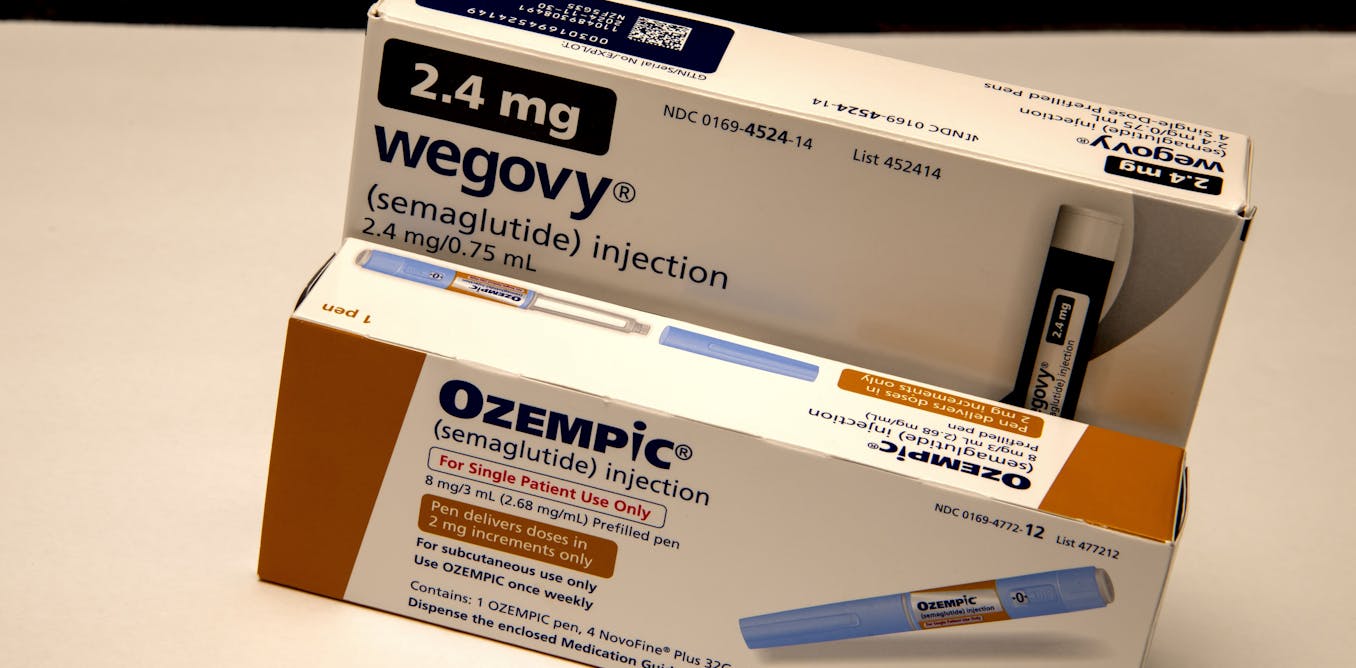Find UConn Experts
UConn faculty experts can provide insights on a variety of topics and are available to respond to inquiries from journalists, conference organizers, and more.
Search for Experts by Subject Matter
Explore Experts by Topic or Name
Filters Active
Filters
Charles Yarish, Ph.D.
Professor Emeritus, Department of Ecology & Evolutionary Biology
Dr. Yarish is an expert in marine macroalgae, coastal management, and commercial uses for seaweed for food, cosmetics, and biofuels.
- Stamford CT UNITED STATES
Michelle Zabel, MSS
Executive Director of Innovations Institute
Michelle Zabel and her team advance research-based, culturally responsive solutions for child, youth, and family-serving public systems.
- Hartford CT UNITED STATES

Our Experts Weigh In


Moths in the Mojave, with UConn's David Wagner
Did you know that there are approximately 180,000 moth and butterfly species living in California’s Mojave Desert? Moths, the winged insects famous for eating sweaters and flocking to lights at night, are a mysterious and captivating species for entomologists like UConn's David Wagner. He was part of a research study that was documented recently in The Washington Post. Each night in the desert, vast clouds of sphinx moths, some spanning the palm of your hand, speed between night-blooming flowers, sipping nectar. Ethmia, tiny black moths with spots shaped like musical notes, emerge from the dark like fairies. Thousands of geometrid moths, no bigger than your fingernail, slip by cloaked in desert hues from rusty reds to pale green. To witness them, I traveled deep into the Mojave Desert this spring with a team from the California Academy of Sciences working to ensure the survival of lepidoptera. For two days, we beat bushes, placed traps and collected thousands of moths to see what lives there — and what can be saved. Moths have inhabited our planet for at least 200 million years. But the conservation status of about 99 percent of moth species remains unknown. Some, like sphinx moths, remain abundant. Many others are probably being pushed to the brink by development, land-use changes, pesticides and pollution, and rising temperatures. “It’s not this unseen force,” says David Wagner, an entomologist at the University of Connecticut. “It’s humans.” Over two nights in the desert, I discovered just how easy it is to fall in love with an unloved insect. And why “mothing” may be the best way to discover the miracle of biodiversity in your own backyard. On the arid western edge of the Mojave, where the desert floor rises to meet the San Bernardino Mountains, sits the 306-acre Burns Piñon Ridge Reserve. We venture out in the morning with beating sticks. Hitting the branches of small oaks and rabbitbrush deposits a treasure trove of insect life into collectors made out of fabric: Crane flies, green lacewings, spiders, walking sticks and caterpillars that will one day grow into moths. Wagner and Chris Grinter, an entomologist and collection manager at the California Academy of Sciences, will catalogue the most interesting ones. The academy houses a collection of 18 million insects, 700,000 of which are butterflies and moth specimens. Many are still waiting for scientists to identify and name them. The plight of moths and caterpillars has fascinated Wagner since childhood. After 20 years, he is no less enthusiastic — or worried. Wagner traveled to Burns Piñon to help finish his magnum opus, the successor to his 500-page guide to eastern North America’s caterpillars. The guide for the west will probably run more than 1,500 pages, a testament to the region’s remarkable biodiversity. As the sun sets, the mood is anticipatory. We head out into the desert to set our traps and see what moths we’ll discover. “The nice thing,” says Grinter, “is moths will come to you.” The article is an amazing read - and the link is above. And if you are interested in knowing more about moths, insects, or the fascinating field of entomology, then let us help. Dr. David Wagner is an expert in caterpillars, butterflies, moths, and insect conservation, and he's commented extensively on the current decline of insects worldwide. Click his icon to arrange an interview today.
November 04, 2024
3 min


Every Voice and Vote Matters
It's the right of every citizen - and with a presidential election less than two weeks away, a team of social workers from UConn are working to make sure every voice is heard as the U.S. choses a new leader on Nov. 5. Voting Is Social Work - a campaign led by Tanya Rhodes Smith, director of the Nancy A. Humphreys Institute for Political Social Work at the UConn School of Social Work - is getting a lot of attention for its work engaging social workers to help empower some of the most vulnerable and disenfranchised groups to get registered and cast their ballots in local elections. “Voting is complicated, and it’s intimidating, especially for vulnerable populations, like the unhoused, the formerly incarcerated, or those living in congregate care,” says Rhodes Smith. “We know that being a non-voter is a very isolating space, because voting is highly relational. Campaigns generally ignore non-voters— you don’t get campaign materials, or someone knocking on your door. Information on candidates in state and local elections in communities with low turnout can be very hard to find or even nonexistent.” That’s where social workers, explains Rhodes Smith, can play an important role in helping disenfranchised voters understand their rights – and register to vote. Money, Power, and Resources As co-founders since 2015, UConn’s Humphreys Institute has been the institutional home for Voting Is Social Work. Also known as the National Social Work Voter Mobilization Campaign, Voting Is Social Work supports nonpartisan voter engagement as central to social work’s mission, ethical mandate, and impact. “We’ve always believed that social work has the power to transform democracy,” says Rhodes Smith, “and we believe every social worker – and social service agency – should include nonpartisan voter engagement into their practice and work. Because we reach non-voters – those who are least likely to vote.” October 16 - UConn Today It's an initiative catching attention across the country. Research has linked voting to higher earning and education, better health outcomes, and lower rates of recidivism. But education is key, particularly for individuals with special circumstances, like the formerly incarcerated, people living in congregate care, and the unhoused. Homelessness comes with a new, unique set of challenges during an election cycle. However, homeless residents have protections, including voting rights. Nationwide, only 10% of unhoused people vote each year, according to the Institute of Political Social Work at the University of Connecticut. Many social workers in Connecticut are working to educate unhoused residents about their voting rights, according to UConn Social Work professor Tanya Rhodes Smith, director of the Nancy A. Humphreys Institute for Political Social Work. “When you ask somebody if they would like to check their voter registration, they may say, ‘I'm not eligible,’ or ‘I've never voted,’ and that's really important information for you to know,” Rhodes Smith said. “It really tells a story about them.” About 60% of eligible voters turnout in presidential election years, but increasing voting rates is important for local elections as well, Rhodes Smith said. “When you have 10% to 15% [voter turnout], that's not an accountable government, that's a government that's accountable to the 10% to 15%,” Rhodes Smith said. “We've seen it over and over in Bridgeport, that nothing changes because that turnout rate doesn't go up, and so there is no accountability when you have an unhealthy democracy.” October 10 - WNPR Looking to know more about this important work? If so, let us help. Tanya Rhodes Smith specializes in policy development, nonprofit administration, voter engagement and legislative advocacy. She's available to speak with media about this important topic - simply click on her icon now to arrange an interview.
October 21, 2024
3 min


Expert Opinion - The Undisclosed Risks of Off-brand Ozempic and Other Weight Loss Products
The popularity -- and price -- of brand-name injectable drugs like Ozempic, Wegovy, Mounjaro, and Zepbound has skyrocketed. But the soaring demand for these drugs -- used for weight loss as well as to control blood sugar levels and reduce the risk of heart disease -- and the limited supply as well as lack of generic options has also led to a flood of non-brand alternatives in the market. In a recent article for The Conversation, UConn expert C. Michael White, Distinguished Professor of Pharmacy Practice, issued a warning to consumers about the potential undisclosed risks of these off-brand products: High demand is driving GLP-1 wannabes The dietary supplement market has sought to cash in on the GLP-1 demand with pills, teas, extracts and all manner of other products that claim to produce similar effects as the brand names at a much lower price. Products containing the herb berberine offer only a few pounds of weight loss, while many dietary supplement weight loss products contain stimulants such as sibutramine and laxatives such as phenolphthalein, which increase the risk of heart attacks, strokes and cancer. The role of compounding pharmacies Unlike the dietary supplements that are masquerading as GLP-1 weight loss products, compounding pharmacies can create custom versions of products that contain the same active ingredients as the real thing for patients who cannot use either brand or generic products for some reason. These pharmacies can also produce alternative versions of brand-name drugs when official drug shortages exist. Since the demand for GLP-1 medications has far outpaced the supply, compounding pharmacies are legally producing a variety of different semaglutide and tirzepatide products. These products may come in versions that differ from the brand-name companies, such as vials of powder that must be dissolved in liquid, or as tablets or nasal sprays. Just like the brand-name drugs, you must have a valid prescription to receive them. The prices range from $250-$400 a month – still a steep price for many consumers. Compounding pharmacies must adhere to the FDA’s sterility and quality production methods, but these rules are not as rigorous for compounding pharmacies as those for commercial manufacturers of generic drugs. In addition, the products compounding pharmacies create do not have to be tested in humans for safety or effectiveness like brand-name products do. Proper dosing can also be challenging with compounded forms of the drugs. Companies that work the system For people who cannot afford a compounding pharmacy product, or cannot get a valid prescription for semaglutide or tirzepatide, opportunistic companies are stepping in to fill the void. These include “peptide companies,” manufacturers that create non-FDA approved knockoff versions of the drugs. From November 2023 to March 2024, my team carried out a study to assess which of these peptide companies are selling semaglutide or tirzepatide products. We scoured the internet looking for these peptide companies and collected information about what they were selling and their sales practices. We found that peptide sellers use a loophole to sell these drugs. On their websites, the companies state that their drugs are for “research purposes only” or “not for human consumption,” but they do nothing to verify that the buyers are researchers or that the product is going to a research facility. By reading the comments sections of the company websites and the targeted ads on social media, it becomes clear that both buyers and sellers understand the charade. Unlike compounding pharmacies, these peptide sellers do not provide the supplies you need to dissolve and inject the drug, provide no instructions, and will usually not answer questions. Peptide sellers, since they allegedly are not selling to consumers, do not require a valid prescription and will sell consumers whatever quantity of drug they wish to purchase. Even if a person has an eating disorder such as anorexia nervosa, the companies will happily sell them a semaglutide or tirzepatide product without a prescription. The average prices of these peptide products range from $181-$203 per month. Skirting regulations Peptide sellers do not have to adhere to the rules or regulations that drug manufacturers or compounding pharmacies do. Many companies state that their products are 99% pure, but an independent investigation of three companies’ products from August 2023 to March 2024 found that the purity of the products were far less than promised. One product contained endotoxin – a toxic substance produced by bacteria – suggesting that it was contaminated with microbes. In addition, the products’ promised dosages were off by up 29% to 39%. Poor purity can cause patients to experience fever, chills, nausea, skin irritation, infections and low blood pressure. In this study, some companies never even shipped the drug, telling the buyers they needed to pay an additional fee to have the product clear customs. If a consumer is harmed by a poor-quality product, it would be difficult to sue the seller, since the products specifically say they are “not for human consumption.” Ultimately, consumers are being led to spend money on products that may never arrive, could cause an infection, might not have the correct dose, and contain no instructions on how to safely use or store the product. Dr. C. Michael White is an expert in the areas of comparative effectiveness and preventing adverse events from drugs, devices, dietary supplements, and illicit substances. Dr. White is available to speak with media -- click on his icon now to arrange an interview today.
October 11, 2024
4 min


#Expert Opinion: 'Gun laws need an overhaul'
In the aftermath of last week's school shooting in Georgia, Jennifer Necci Dineen and Kerri M. Raissian from UConn’s ARMS Center contributed this compelling piece to The Atlanta Journal-Constitution. The entirety of the article is available here: On Sept. 4, the United States experienced its 45th school shooting of 2024, this time at Apalachee High School in Winder, Georgia. Barrow County Sheriff Jud Smith called the shooting “pure evil” and reported the suspected shooter would be tried as an adult. Since then, the shooter’s father has also been charged. A criminal justice response is vital, but it cannot be our only response. Gun laws need an overhaul. The failure to do so means that we will continue charging shooters and their families and attending the funerals of those senselessly killed. Laws are the role of government. Should elected officials fail to act (again), we think it is also fair to hold them responsible for the firearm violence killing our nation’s children. Georgia lawmakers have passed legislation to protect children in other ways. Georgia requires that children be at least 16 years old and to have held a learner’s permit for a year before they can drive: minors under 16 cannot be employed in dangerous or harmful jobs; and those under 17 cannot marry. These restrictions recognize that children’s prefrontal cortex, the part of their brain responsible for reasoning, impulse control and decision-making, is not yet fully formed. Yet, despite firearms being the leading cause of death for children in the United States, Georgia has minimal regulations governing children’s firearm access. There is no minimum age for purchasing or possessing rifles or shotguns, no permit required for carrying firearms in public (whether open or concealed) and no mandate for secure firearm storage (such as unloading, locking and storing ammunition separately). Details of the shooting in Winder continue to emerge, but let’s start with what we know. Reports indicate that the shooter and his father were questioned by the Jackson County Sheriff’s Office in May 2023 following multiple anonymous tips about online threats, including images of guns. The suspect’s father claimed that his child did not have unfettered access to the guns. The authorities did not have probable cause for an arrest, and so they left and the guns stayed. And, in fact, the father bought his son a new gun — an AR-15 — as a Christmas present. Perhaps more disturbing is that this kind of negligence and indifference is not an anomaly. A similar set of facts surround the Nashville Waffle House shooter and the Michigan Oxford High School Shooter. In both cases, parents ignored warning signs and helped their sons keep or procure firearms that were used in mass shootings. Moreover, almost three-quarters of guns used in gun-related incidents at schools come from the home or someone the shooter knows. It’s fair to ask: Where are the parents? However, we also want to know where are the elected officials charged with keeping us and our children safe when they are at school, the movies, a parade or otherwise living their lives? Laws mandating secure firearm storage, permitting, minimum age requirements and background checks have been proven to lower firearm homicide rates. Emergency risk protection orders, or red-flag laws, which temporarily prevent individuals deemed a danger to themselves or others from possessing or purchasing firearms, have also been effective in reducing firearm homicides. Georgia’s failure to implement such regulations, allowing a child with underdeveloped decision-making skills to access a gun, means the state shares the blame for the gun-related injuries and deaths at Apalachee High School. Georgia Gov. Brian Kemp is right. It’s not the time to “talk about safety and policy.” The time was years ago, but it’s never too late to do the right thing. Kerri Raissian is an associate professor in the School of Public Policy at the University of Connecticut; director of the University of Connecticut's UConn’s Center for Advancing Research, Methods, and Scholarship (ARMS) in Gun Violence Prevention; and co-director of the Institute for Collaboration on Health, Intervention, and Policy (InCHIP) Gun Violence Prevention Research Interest Group. Her research focuses on child and family policy, with an emphasis on understanding how policies affect fertility, family formation, and family violence. She is available to speak to media about this important topic - simply click on her icon now to arrange an interview today.
September 10, 2024
3 min


Watching the solar eclipse Monday? Our expert has advice on how to do it safely
It's being called a "once in a lifetime" opportunity - and Monday's solar eclipse has almost everybody on the continent talking as well as planning and preparing to get a glimpse of this rare astronomical moment. Amid the excitement is a need for people to view the event safely, which is why NBC Connecticut recently caught up with UConn Associate Professor of Physics Jonathan Trump to explain what's happening and, if you're going to be gazing upwards, what you need to know and how to do it without getting hurt. An astronomical celebration is just around the corner. But if you want to see the solar eclipse for yourself, there are steps you need to take to do so safely. First and foremost: to watch this out-of-this-world display April 8, don’t even think about looking right at the sun. “Most important thing, do not look directly at the solar eclipse with your eyes,” said UConn associate professor of physics Jonathan Trump. “Here in Connecticut the eclipse will be about 90% which is pretty spectacular, but even 10% of the sun’s light is a lot of the sun’s light.” UConn is one of many organizations around the state holding a celebration and viewing event. “The next one is not going to be for another 20 years, so yeah this is a special event,” said Trump. Sunglasses aren’t strong enough to protect your retinas from these UV rays. “The ultraviolet light is what give us sunburns and it can severely damage the retina in the back of your eye and permanently scar your vision. So do not look directly at the sun,” said Trump. You can view the solar eclipse safely with certified solar eclipse glasses. If you wear eyeglasses, put the solar eclipse glasses on top of your glasses. And if you have solar eclipse glasses from the last phenomena visible stateside, which was seven years ago, you should get a new pair. Experts we spoke to say they have no more than a three-year shelf life. Looking to know more? Jonathan Trump is an observational astronomer and is available to speak with reporters about Monday's eclipse. Simply click on his icon now to arrange a time to talk today.
April 05, 2024
2 min


What Families Need to Know about How to Safely Store Firearms at Home
Guns have been identified as the leading cause of death for children in the United States, making ongoing discussions about firearm safety especially important. Kerri Raissian, an associate professor of public policy at the University of Connecticut, and Jennifer Necci Dineen, associate director of the ARMS Center for Gun Injury Prevention, recently co-authored an very important piece for The Conversation titled detailing what families need to know about safely storing firearms at home. There were 2,571 children age 1 to 17 who died in shootings in the U.S. in 2021, 68% more than the 1,531 that occurred in 2000. To help reduce the number of firearm-related deaths and injuries among children, Secretary of Education Miguel Cardona in January 2024 called upon school and district administrators to talk with parents and guardians about safe firearm storage practices. As experts on the safe storage of firearms – and as leaders of the University of Connecticut’s ARMS Center for Gun Injury Prevention – we often get questions about the best ways to keep guns out of the hands of children. We offer the following tips: 1: Safely store all of your firearms 2. Don’t assume you can hide your guns 3. Store ammunition separately 4. Learn to talk about firearm safety 5. Know the law 6. Invest in a quality safe and/or locking device The full piece is available here from The Conversation. Kerri Raissian is an associate professor in the School of Public Policy at the University of Connecticut, director of the University of Connecticut's UConn’s Center for Advancing Research, Methods, and Scholarship (ARMS) in Gun Violence Prevention, and co-director of the Institute for Collaboration on Health, Intervention, and Policy (InCHIP) Gun Violence Prevention Research Interest Group. Her research focuses on child and family policy, with an emphasis on understanding how policies affect fertility, family formation, and family violence. She is available to speak to media about this important topic - simply click on her icon now to arrange an interview today.
March 12, 2024
2 min


